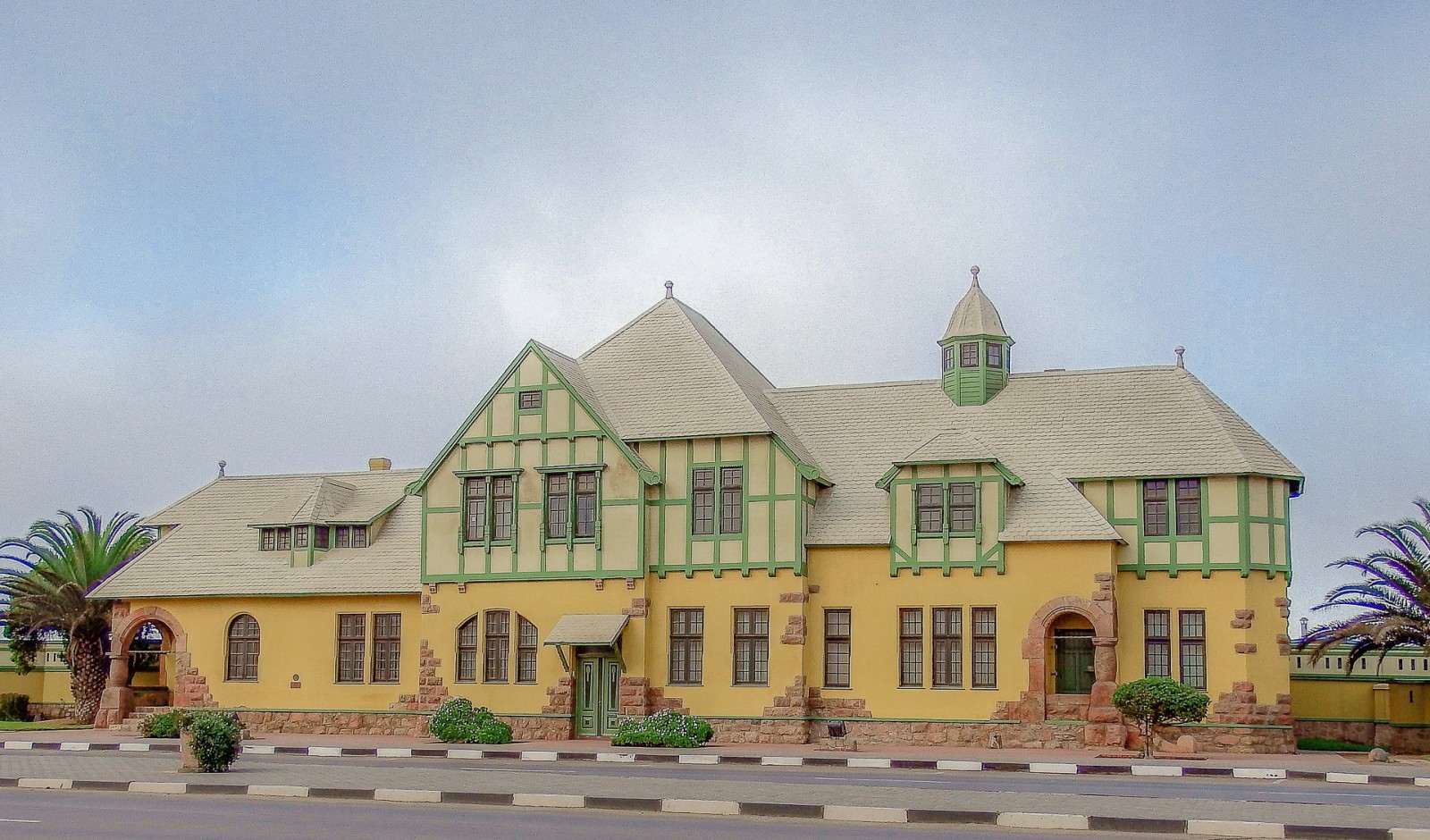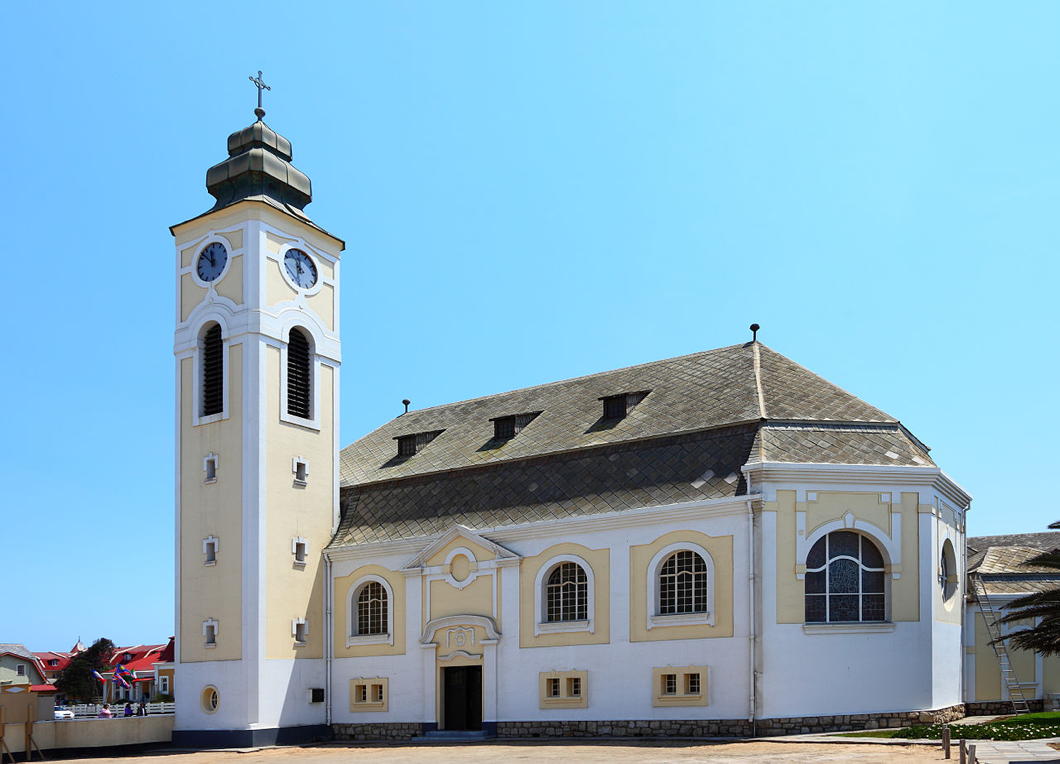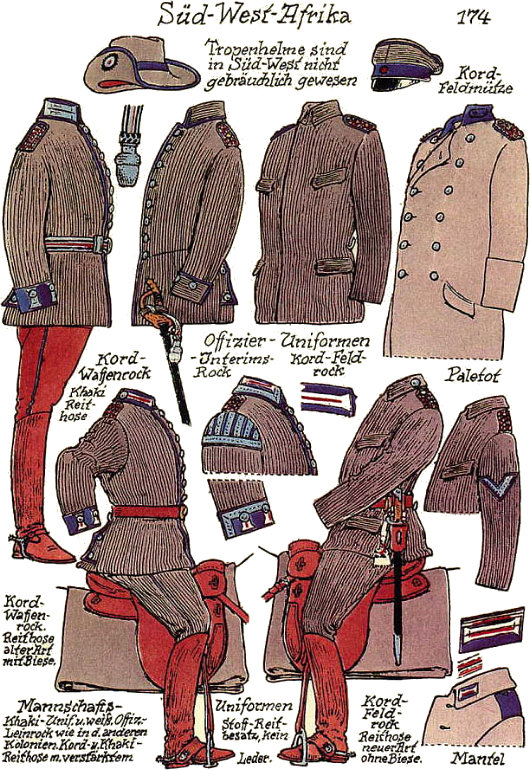Namibia
About Andrew Cusack
 Writer, web designer, etc.; born in New York; educated in Argentina, Scotland, and South Africa; now based in London.
Writer, web designer, etc.; born in New York; educated in Argentina, Scotland, and South Africa; now based in London. read more
News
Blogs
Reviews & Periodicals
Arts & Design
World
France
Mitteleuropa
Knickerbockers
Argentina
The Levant
Africa
Cape of Good Hope
Netherlands
Scandinavia
Québec
India
Muscovy
Germany
Academica
Skeleton Coast Baroque
Examples of baroque architecture in Namibia are — sadly — not numerous enough to deserve so much as a monograph. (Of the Namibian jugendstil, we can say more.)
But being few does not mean not existing at all.
The best archetype of the Namibian baroque is the German Evangelical Lutheran Church in Swakopmund.
This beach town of 45,000 souls is known for its somewhat otherworldly architecture, the most common description of which might be Tropical Teutonic.
Just take a look at the Old Prison, whose moniker is something of a misnomer as it’s still in everyday use as the town lock-up.
In the 2000s, AMC filmed its remake of the classic television series ‘The Prisoner’ in Swakopmund.
“You couldn’t get more isolated than we are here,” the show’s star actor, Sir Ian McKellen, told the Daily Mail.
“Apart from being cut off by the sea in one direction and the desert in the other, the nearest big city, Cape Town, is two hours away by air. The tourist brochure lists the main attractions only as the prison, the war memorial and a steam engine museum named after Martin Luther.”
“But the most fascinating thing about this place is you never know what’s around the corner. You can walk down absolutely deserted streets, and believe there is no one else here. Then you pitch up at a restaurant and find it jammed to the rafters with people. Where did they all come from? What exactly is happening? It is like nowhere else on earth.”
The Mail’s journalist continues:
Then something happens which illustrates his point perfectly. Seemingly out of nowhere, a group of dog owners assemble outside Sir Ian’s apartment. The dogs are put through a series of trials before, after a few minutes and without fanfare, they all vanish into the rolling mist, as if instructed to do so by some unseen force. When it lifts, it is as if they had never been there.
“Typically Swakopmund,” says McKellen. “Strange sights everywhere.”
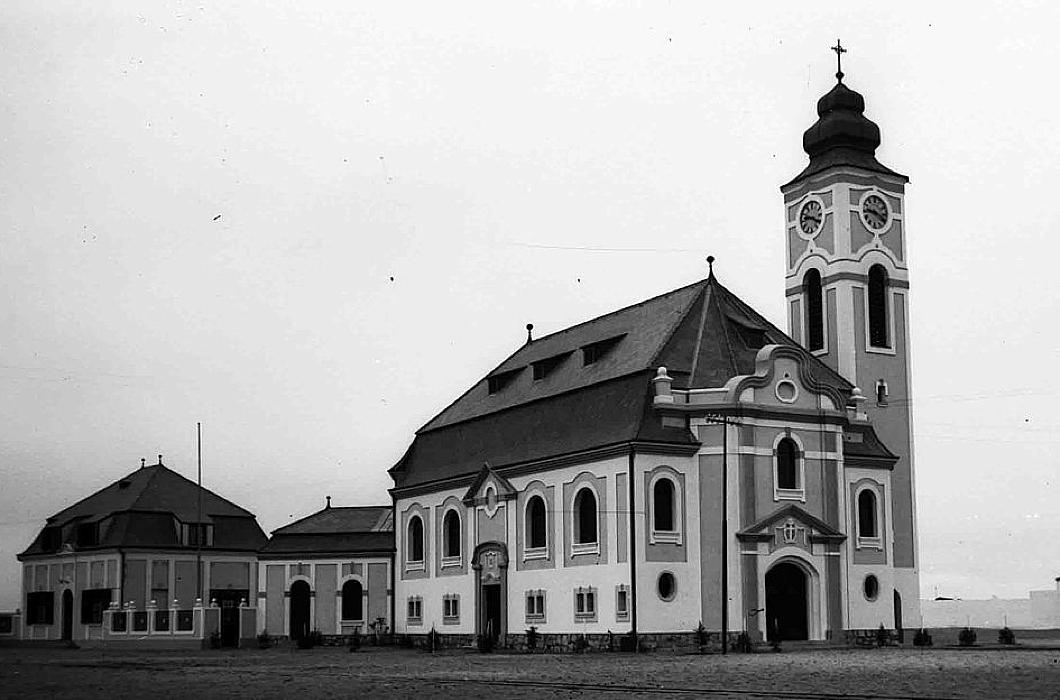
The Swakopmund church here is a congregation of the Deutsche Evangelisch-Lutherische Kirche in Namibia, one of three Lutheran denominations in the county.
The DELK is, obviously, for the German speakers who make up a third of the country’s whites (who altogether are six per cent of the population).
There is also the Evangelical Lutheran Church in Namibia, founded by Finnish missionaries and primarily made up of Ovambo and Kovango people, and the Rhenish-founded Evangelical Lutheran Church in the Republic of Namibia.
Like many Protestant churches in Africa (and beyond), the interior is unremarkable.
According to lore, the architect was a Bavarian, instigated by the government builder Otto Ertl, and the building was consecrated in January 1912 — twenty years after Curt von François founded Swakopmund.
Worth a look-at if you find yourself in the area.
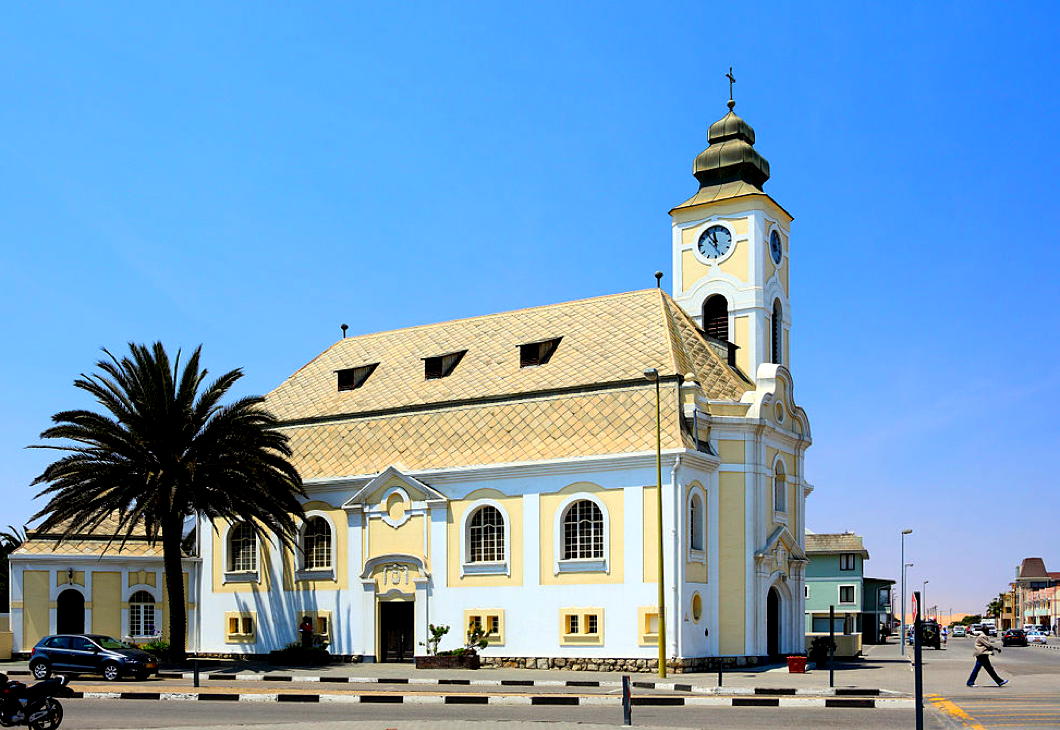
What do Namibians know of Germany?
Namibia spent more than twice as long under South African administration then it did when it was German South West Africa, but its formative years under the Germans continue to have an influence.
For one thing, you can stumble around streets marked Zeppelinstraße and Bismarckstraße, not to mention the quite quaffable beer the country produces. Germany’s most remembered act in Namibia, alas, is the massacre of the Herero tribe, whose women are today known for their colourful pseudo-Victorian traditional dress.
Still, a third of the country’s white population are of German descent and German was an official language until 1990, though Namibian Black German (which linguists debate whether it is a dialect or a pidgin) is now nearly extinct. Most German Namibians today would speak Afrikaans on an everyday basis and have a strong grasp of English too.
But what does the average Namibian on the street know of Germany? In the above video a man goes about asking precisely that. Particularly interesting is that moneyed Frankfurt seems to be much better known than the political capital of Berlin. If only there was a video asking Germans what they know of Namibia…
Kolmanskop
Ghost town of the Namib
NAMIBIA IS A LAND that fascinates me, which is perhaps surprising. This arid land is sparsely populated — just 6.6 people per square mile — but its deserts are believed to be the oldest in the world. Those who haven’t experienced its harsh beauty may wonder why this land has attracted its odd and varied collection of peoples, but here the Ovambo, the Kavango, the Herero, the Afrikaner, the German, and the Bushman all call home.
I have already written somewhat about Lüderitz and beyond it the Diaz Point. As you speed down the B4 from Keetmanshoop to Lüderitz — a four-hour drive passing through just the one small village of Aus — you can turn off just before you reach the coastal town and pay a visit to the eerily ghost town of Kolmanskop: Kolmannskuppe in the original German. (more…)
The Namibian Way of Reconciliation
Accepting differences, not erasing them, is the path to civic harmony
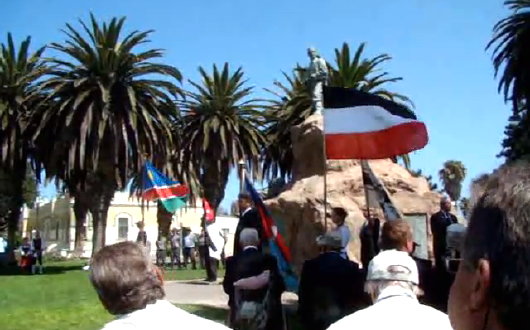
DISCORDIA GERANT ALII, tu felix Namibia reconciliant! Peace and reconciliation are amongst the noblest of earthly aims, but the deluded establishment that rules most of what used to be called the Western world often seem convinced that peace among peoples can only be achieved by erasing the differences between them. Yet it is precisely those differences — the unique characteristics of tribe, clan, and platoon that separate us from some and unite us with others — that make us who we are: human beings, created by God in time and place and circumstance. Without them, we are rootless citizens of nowhere, easily abused and manipulated by the powerful. (How flimsy is even the thickest oak when its roots have been severed). It is the acknowledgement of differences, rather than the erasing of them, that leads to true respect and understanding between and among peoples. While the racial grievance industry thrives in America and Europe, an entirely different attitude exists in happy Namibia. (more…)
Diaz Point
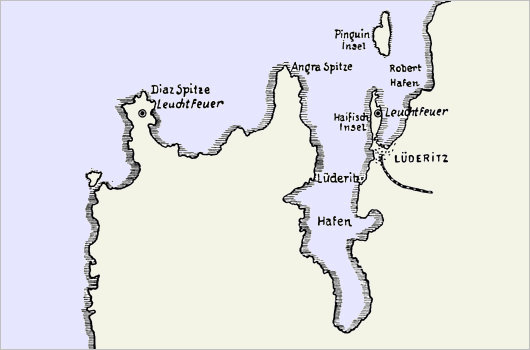
You drive to the end of the world, turn left, and continue. That’s the way to get to Diaz Point. Namibia’s coastline is supposed to be the least hospitable on the planet, with desert meeting salty ocean with naught in between. Staying the night at Seeheim, an agglomeration of half a dozen houses nearby a stone castle hotel, we woke early and drove the 200+ miles west through the arid rocky desert. The experience is made all the more interesting for the 16,000-square-mile “Restricted Diamond Zone” one drives on the northern periphery of. Namibia’s diamonds are primarily alluvial deposits, meaning they rest on ancient river beds, sitting on the soil or resting just a few feet below. The forbidden territory’s guards are believed to have a policy of shooting first and asking questions later. There are over sixty countries in the world smaller than the Sperregebiet (forbidden area), as the Restricted Diamond Zone is colloquially known.
Eventually — passing through the area inhabited by the wild horses of the Namib, descendants of German cavalry horses and farm animals variously escaped or set free — you arrive at the town of Lüderitz on the Atlantic coast. Besides its German street names (Zeppelinstraße, not to mention Bismarck, Bahnhof, Moltke), the town’s architecture is a curious Teutonic colonial, reinvented for the almost-tropical locale. From one or two of the local businesses, one could easily imagine a slightly overweight German in a linen suit and panama hat, with an eye-patch as well as a cane for his limp, ordering around the natives crudely while engaged in some nefarious criminal enterprise or campaign of sabotage.
But for Diaz Point, you go to Lüderitz, turn left, and go further still. Driving south from the colonial town, you encounter a barren, rocky, and utterly colourless landscape, the grey tones of which immediately bring to mind the surface of the Moon. Am I still on Earth? Only the blue sky and the occasional appearance of vegetation remind you that you’re still on the third planet from the Sun. (more…)
The Goerke House, Lüderitz
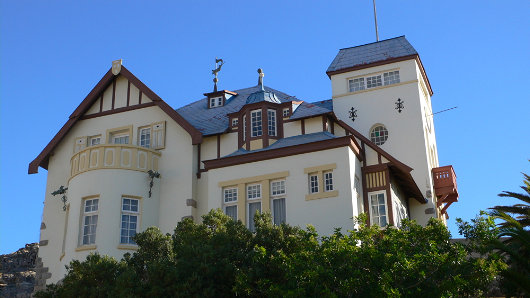
THE FAMILIAR PHRASE has a person in difficult circumstances being “between a rock and a hard place”. The Namibian town of Lüderitz is stuck between the dry sands of the desert and salt water of the South Atlantic — this is the only country whose drinking water is 100% recycled. Life in this almost-pleasant German colonial outpost on the most inhospitable coast in the world has always been something of a difficulty, but the allure of diamonds has at least made it profitable. One such adventurer who came from afar and made his fortune in this outer limit of the Teutonic domains was one Hans Goerke. (more…)
Search
Instagram: @andcusack
Click here for my Instagram photos.Most Recent Posts
- Waarburg October 2, 2024
- A Prize for the General September 23, 2024
- Articles of Note: 17 September 2024 September 17, 2024
- Equality September 16, 2024
- Rough Notes of Kinderhook September 13, 2024
Most Recent Comments
Book Wishlist
Monthly Archives
Categories

